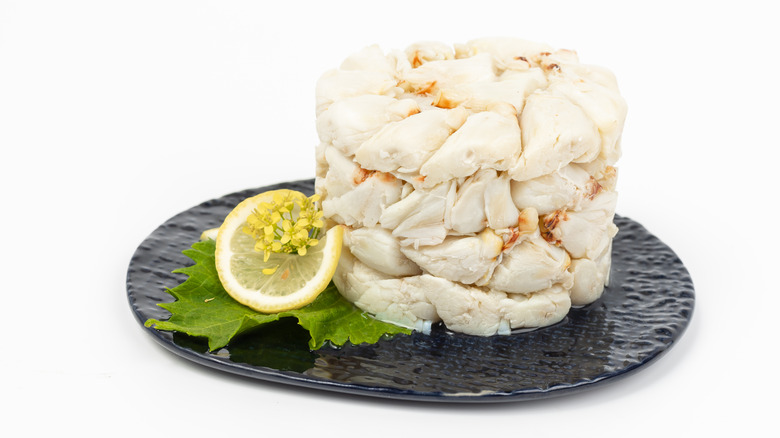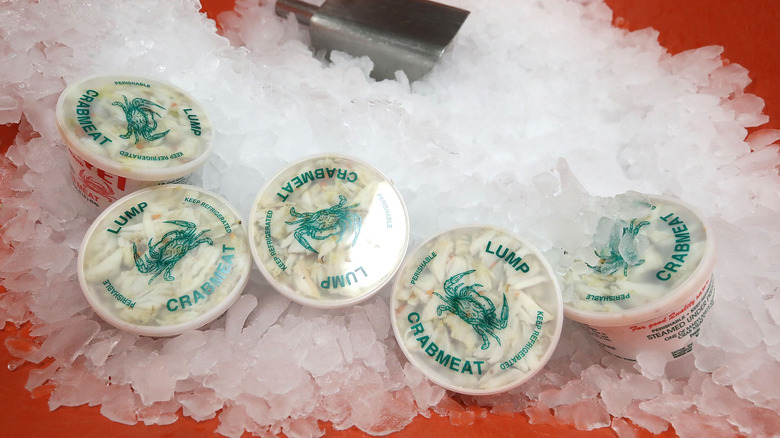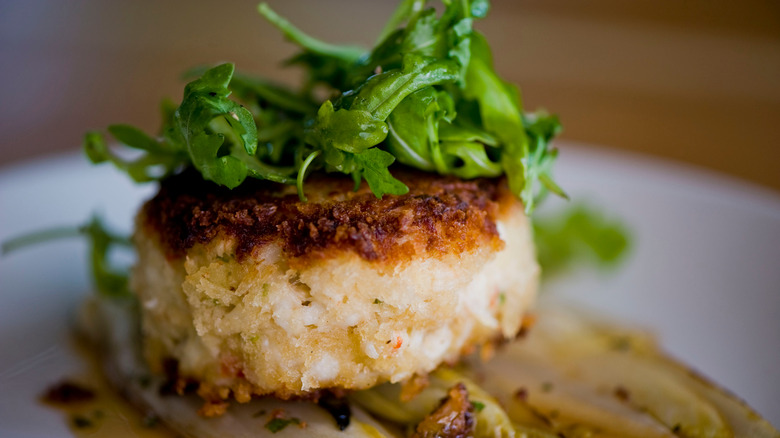How To Choose The Best Crab Meat Depending On Your Recipe
Crab meat can do so much. Whether carefully scooped into crab cakes, tucked into ravioli, or starring in a crab salad Louis, it's always a good idea to work some of the sweet, briny seafood into the menu. If you're heading to the grocery store or fishmonger in search of ingredients, there is no one package labeled "crab meat," unfortunately. Crab meat can vary greatly in price and quality depending on how it's packaged and processed, and there are different grades, so it can be a little confusing to know if you're buying the right thing.
Not every kind of crab meat is the right choice for every recipe. For instance, you can use a lower grade of crab meat if it's swimming in cheese and butter, like in a seafood alfredo, while a high quality of crab meat is best for serving on a chilled seafood tower. Before you hit the seafood counter for a batch of chilled crab dip, get to know the different kinds of crab meat and what to look for so you can shop like a pro. If you know how to read the labels and how much crab meat should cost, you'll be able to confidently pick up a pound or two and avoid wasting any money.
Crab meat from the body
Crab meat is divided into five different categories, which, in descending order of price, are jumbo lump, lump, backfin, special, and claw.
Jumbo lump is the most expensive variety ($40 to $50 a pound), and it commands a high price because there are only two pieces on each crab — the two muscles that connect the swimmer fins. You may sometimes see it labeled as mega jumbo or super jumbo. It's got a firm texture, sweet flavor, and is perfect for serving on a raw bar or dipped in butter. Don't waste any money using this variety for recipes, as it's too good and delicate to mix with other ingredients.
Lump comes from the body of the crab and is also often mixed with pieces of broken jumbo lump. This crab meat is high quality, although not as rare as jumbo lump, so it's a good choice for making crab-centric recipes where the meat should shine, like crab cakes or crab salad.
Backfin is a mix of lump crab and white meat from the body that's broken into pieces. It's slightly lower in quality than lump but is still good for making crab cakes, quesadillas, and adding to pasta.
Special is pretty similar to backfin and is also made up of small pieces of white crab meat from the body. This grade is the sweetest tasting and is great for omelets and mayonnaise-based salads, dips, and soups.
Claw meat and storage
Claw meat, as the name implies, comes from the crab claws. It's a darker color than meat from the body, which can be pink or brown, and it's also got a stronger flavor. Claw meat can stand up to other overpowering flavors, like seasonings and heavy sauces, so this is the go-to for dishes like crab stuffing, hot dip with cheese, and cream-based soups. Claw meat is also the least expensive, so it's more affordable to pile into a crab casserole.
The most economical way to buy crab meat is to get fresh crabs and steam them yourself, then crack the shells and pick the meat. If you don't have that kind of time, opt for pre-picked meat that's either fresh or pasteurized and canned. You can store fresh meat in your refrigerator for two or three days, and pasteurized meat can be stored in the fridge for up to six months.
If you plan on freezing your crab meat, make it into whatever recipe you'd like before freezing it, or freeze it in the shell if possible. The extra ingredients and shells will protect the delicate texture of the meat from getting dry and stringy in the freezer, where you can store it for up to three months if you have to. However, fresh crab is for eating, so try to serve yours ASAP.


